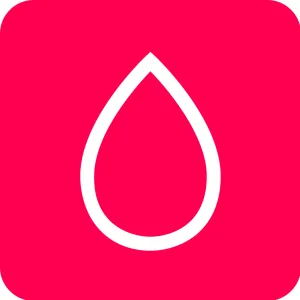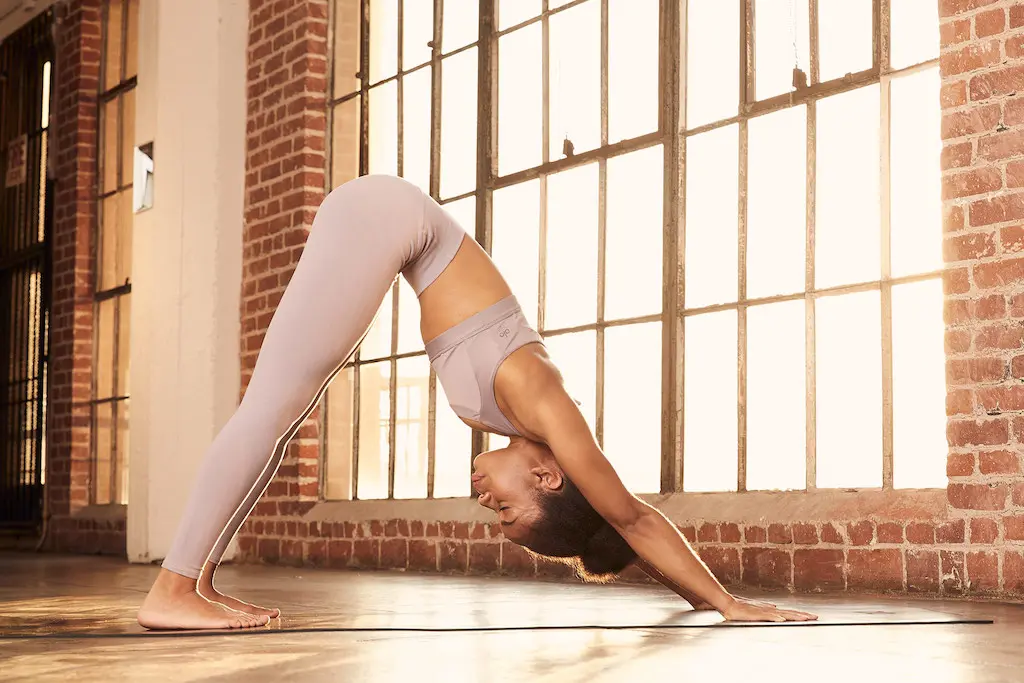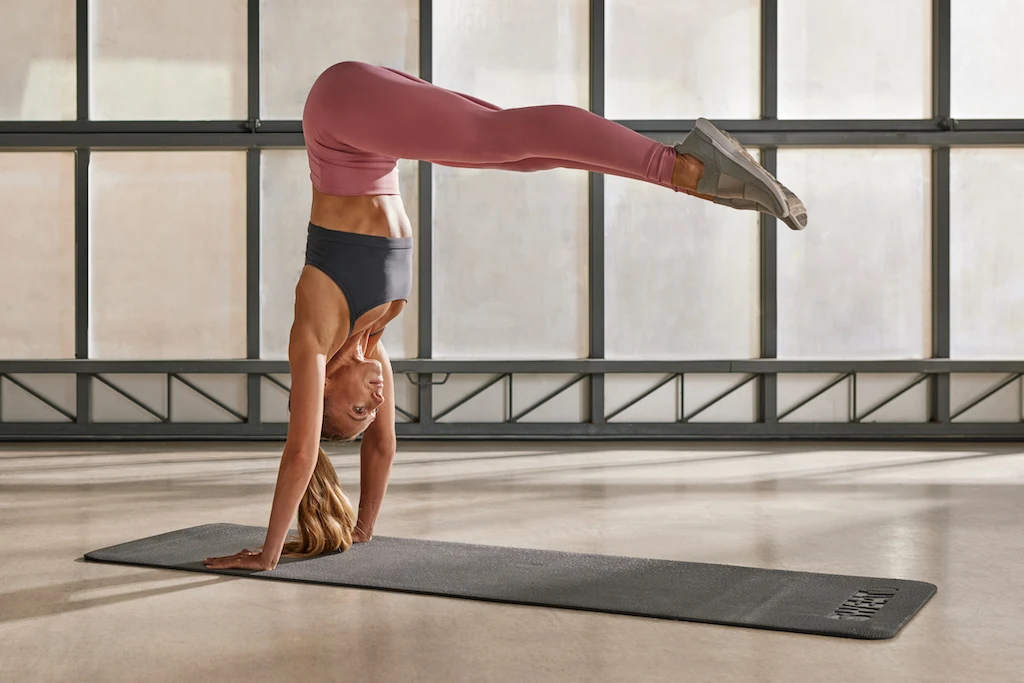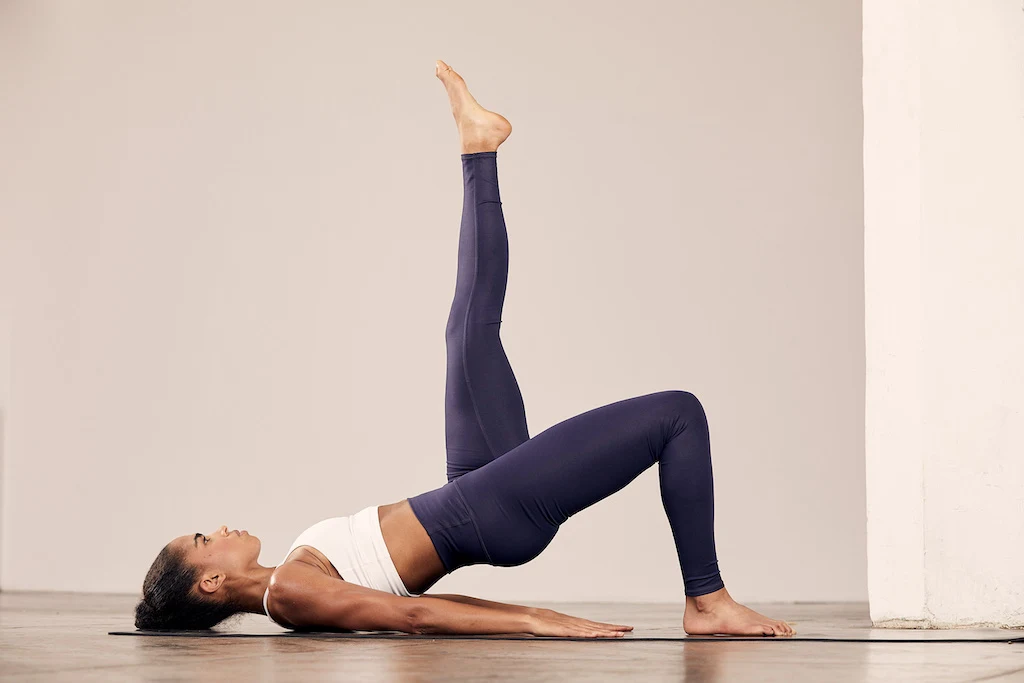Yoga, Pilates & Barre: Which One Is For You?
Understand which of these three training styles is perfect for you and get ready to lengthen, strengthen and flow.

May 21, 2021 - Updated June 20, 2024

If you’re looking for a low-impact training style that can help improve your strength, balance, flexibility and posture (or at-home workouts that can be done with minimal or zero equipment), you’re likely tossing up between yoga, Pilates and barre.
While there are some similarities between these three training styles — in terms of both their benefits and some of the exercises they involve — there are a few things that set them apart from each other. Find out more about each discipline so you can decide which one is right for you.
This vs that: Key differences
Pilates vs yoga: Pilates has a bigger focus on core strength and making small, isometric movements in a position. There are a range of different yoga styles, but they typically either involve moving through a connected flow of postures or asanas or holding one position for an extended period. Although Pilates and yoga can both be beneficial for your mental wellbeing, unlike Pilates, yoga has an ancient spiritual history and for many people, this is a key element of their practice.
Barre vs Pilates: While there are lots of similarities between these two modalities, barre workouts tend to involve a greater cardiovascular element than Pilates, feature more ballet-inspired movements, and often involve light dumbbells or a resistance band. Pilates equipment can include a ball, Pilates ring or reformer machine.

Flow with yoga
Yoga is a total mind and body workout that requires flowing through a set series of exercises or poses – also known as asanas – while connecting the breath to the flow of movements to focus the mind. The practice originated in India and each yoga pose has an English or Sanskrit name.
There are many different styles of yoga, from hatha and dynamic Vinyasa yoga to Bikram or gentle and restorative yin, making it a great option for everyone. Here we’re specifically talking about the physical yoga practice or asana, but there are actually eight limbs to yoga, including breathwork (pranayama), dhyana (meditation) and samadhi (liberation).
Benefits
There are plenty of benefits of yoga, making it a great option as both a standalone practice or to complement your existing workout routine. According to the American Osteopathic Association, it can help increase strength, flexibility, cardiovascular health and vitality while decreasing your risk of injury. The restorative nature of yoga can also have a positive impact on your overall wellbeing and mind-body connection, with the Mayo Clinic highlighting that a yoga practice can help manage anxiety and stress and achieve a greater sense of peace.
Equipment
If you’re a beginner looking to get started with yoga, the good news is that you don’t need any fancy equipment or a large amount of space – although you may want a non-slip mat if you decide to start an at-home yoga practice. If you decide this is the training style for you, you can always invest in items later on such as yoga blocks, bolsters or straps!
Get started!
Sweat instructor Phyllicia Bonanno’s Yoga with Phyllicia classes on the Sweat app are a gentle, accessible way to learn the fundamentals with a focus on slower flows that help you find stability in each pose or posture. If you’re ready for a challenge, try Ania Tippkemper’s Yoga with Ania or Sjana Elise’s Body And Mind (BAM) programs which both follow a powerful and dynamic Vinyasa style.

Ignite your core with Pilates
Created by German gymnast Joseph Pilates in the early 20th century, the origins of Pilates are rooted in rehabilitation and building strength. Pilates consists of a series of controlled, sustained exercises that concentrate on form and core control while stabilising the spine and pelvis.
Benefits
In a typical Pilates class you’ll perform a series of simple, repetitive exercises with an emphasis on strength and control in your abdominals, lower back, hips, thighs and glutes. You’ll find yourself focusing on smaller movements that require you to stabilise your back and core to complete the exercises, making it a fantastic training style for improving strength, stability, posture, balance, range of motion and your mind-muscle connection.
Equipment
A reformer machine might be the first thing that comes to mind when you think of Pilates, but you can also have an incredible bodyweight mat Pilates workout in the comfort of your own home or with the addition of some small pieces of equipment such as a Pilates ball or ring to increase the resistance.
Get started!
No matter your age or fitness level, Pilates can be modified to suit everyone and be challenging for everyone. Sweat trainer Katie Martin has a range of Pilates workouts available in the On Demand section of the Sweat app, alongside her Strength & Pilates program. For a program that is strictly Pilates, Sara Colqhhoun’s Pilates with Sara program blends traditional and contemporary Pilates with elements of functional movement training to increase flexibility, core strength and improve full-body muscle definition.

Feel the burn with barre
Barre is based on a movement style originated by dancer Lotte Berk, who began teaching it in London in 1959. Barre combines ballet-inspired movements (the barre that gives this training style its name is used as a support for some ballet exercises) with functional strength exercises.
Think of barre as a fusion of Pilates, classical ballet moves and dynamic stretching to work your muscles to the point of fatigue with a muscle-burning number of reps for each exercise.
Benefits
As a low-impact exercise, barre delivers similar benefits to yoga and Pilates, including enhanced flexibility and strength, improved posture and body alignment, and activated core muscles. The key difference is a barre workout teaches muscular control and endurance specifically in the hips and shoulders while integrating core stability by working your muscles to the point of fatigue.
Equipment
You'll use just your bodyweight and the barre (you can also use the back of a sturdy chair or a kitchen bench) for support, and sometimes small pieces of equipment to add resistance such as ankle weights or light dumbbells.
Get started!
Sweat trainer Britany Williams will challenge you in her Barre with Britany program, building strength and endurance. You’ll be working your muscles with minimal rest, learning new positions and proper form while simultaneously keeping up with your workout! It will get your heart rate up, but as barre is low-impact, it’s a great option for all fitness levels! Take your training to another level with Britany’s High Intensity Barre program, go for a heavier strength focus with Strength & Barre, or keep moving during pregnancy with Pregnancy Barre!
Yoga vs Pilates vs barre: Which is right for you?
Whether you love the flow of yoga, the control of Pilates or the dance-inspired aspect of barre work, you can’t go wrong by incorporating any of these low-impact training styles into your workout schedule. Commit to a full program or at least one session each week and you’ll see improved strength, balance, flexibility and mind-body connection.
You’re far more likely to stick to something if you enjoy it, so try a couple of classes to find the exercise that works for you. You might be surprised at what gets those endorphins flowing!

A more empowered you starts with Sweat, and our editorial team is here to bring you the latest fitness tips, trainer recommendations, wellbeing news, nutritional advice, nourishing recipes and free workouts.
* Disclaimer: This blog post is not intended to replace the advice of a medical professional. The above information should not be used to diagnose, treat, or prevent any disease or medical condition. Please consult your doctor before making any changes to your diet, sleep methods, daily activity, or fitness routine. Sweat assumes no responsibility for any personal injury or damage sustained by any recommendations, opinions, or advice given in this article.
Fitness